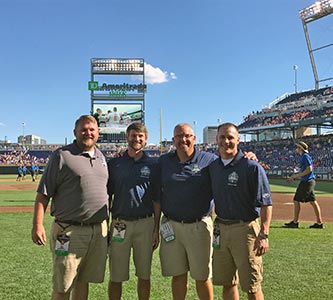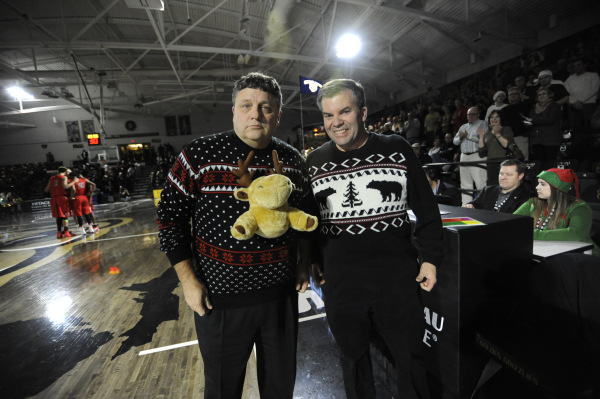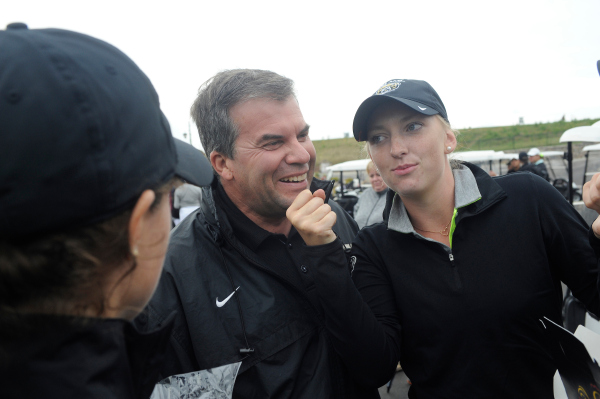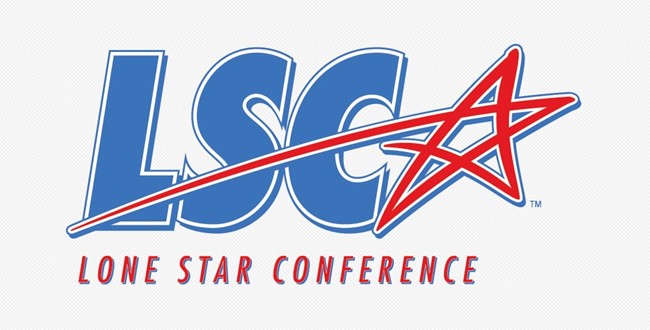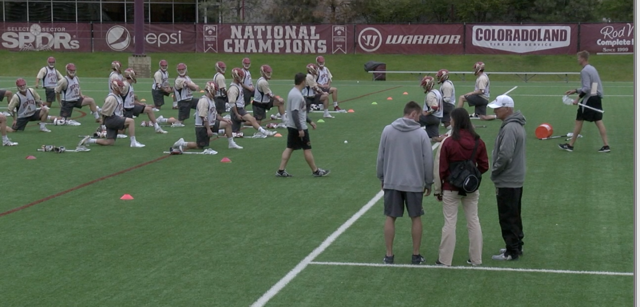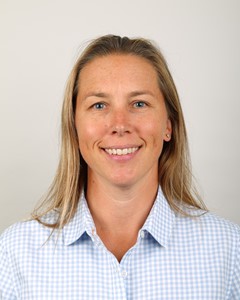
Article reposted from ISU Bengals
Author: Jenna Galloway
The daily life of an athletic trainer is hectic, long and is constantly changing, and there are a select few who are equipped to handle the job. Idaho State Head Athletic Trainer Jodi Wotowey is one of the few, and she’s been involved in athletics for nearly her entire life.
“I was an athlete from the time I could walk practically,” Wotowey said. “I knew I wanted to stay in athletics; that was my world, those were my friends. But I didn’t necessarily want to be a coach.”
There is a multitude of ways to stay involved in athletics outside of athletic training, but Wotowey was drawn to the scientific side of athletics. Her father, a veterinarian, sparked her interest in medicine.
“I had an interest in physical therapy, but I knew that I wanted to stay with a very active population,” Wotowey said. “That’s where athletic training came in.”
Wotowey has been involved in athletic training in some capacity for 23 years. She’s worked as an athletic trainer at both Texas A&M and Texas Christian University, and she’s armed with a bachelor’s degree in biology and an master’s degree in physiology and kinesiology. Wotowey accepted a position with Idaho State as an assistant athletic trainer in August of 2004, and after the completion of her third year with the Bengals she took over as head athletic trainer.
“I try to delegate to my staff as much as possible,” Wotowey said. “I have some great assistants that I’ve been able to keep for a number of years now that have taken over certain areas…what I really gravitate toward is working one-on-one with the athletes because that’s what I enjoy, and that’s where I think my strengths are.”
Wotowey provides the direct care for approximately 100 student-athletes part of the football and men’s basketball programs, but she oversees the treatment of each student-athlete on Idaho State’s 13 Division I teams. As an athletic trainer, she often provides emotional support in addition to her duties as an athletic trainer.
“Some athletes, depending on how far they are from home, they really develop a rapport with you,” Wotowey said. “You sometimes substitute being ‘Mom’. A few of the athletes throughout the years have called me Momma Jods or something like that. Those are the athletes that I know I really bonded with .They’ve touched my life as much as I’ve hopefully touched theirs. It may be that they had a significant injury, so you took them to the hospital, got them chicken noodle soup when they were sick, whatever it was to help them through a hard time.”
Often times a student-athlete’s experience with their athletic trainer only includes preventative measures, like taping, bracing or stretching, and routine treatment and recovery, such as foam rolling, ice baths or massage therapy. But even when student-athletes practice preventative measures, they may still suffer a major injury. For athletic trainers like Wotowey, the process of assessing and treating a major injury begins the second it occurs, and depending on the injury, the treatment process and length varies.
“You may or may not have had the opportunity to actually see [the injury occur],” Wotowey said. “Best case scenario, you actually saw the mechanism, so your mind is already starting to think as you’re approaching the student-athlete.”
For major injuries, there are checklists and protocol for athletic trainers to follow. Wotowey says it begins with calming the student-athlete, assessing the extent of the injury and managing acute trauma if applicable. After that, it’s comfort care.
“Obviously we are still managing the injury, but we are also managing the psychology and helping the athlete just get through a painful time,” Wotowey said.
It’s a balancing act of providing care for the student-athlete, corresponding with the physician while trying not to negatively impact the team and coach in competition. After that, Wotowey says it’s forming a plan for return.
“Once you’re through that process, it’s the, ‘OK, what is the real diagnosis and appropriate care from that point forward?'” Wotowey said. “Going through either surgery or simple rehab and treatment, whatever needs to happen. It may be a three-month or six-month process taking it all the way to the end where they are back into preparation to get back on the field.”
As in any field of medicine, it’s imperative to keep up with the current ideas, theories and practices in order to ensure the safety of student-athletes and the effectiveness of treatment and rehab. Athletic training is no different, and according to Wotowey, it’s a critical aspect of being an athletic trainer.
“The more you learn, the more you can stay on top of things and the better you’re going to be and you’ll provide better service to your student-athletes,” Wotowey said. “It’s critical, and finding the time can be difficult. Whether it’s just reading literature on your own in the mornings or evenings or going to conferences when you have a break…but even then you have to make the time.”
During the busy months of August through March, Wotowey averages a 10 to 12 hour work day in addition to traveling with her assigned teams, so sometimes making time for education can be difficult. Yet, she finds time to make it work. This past year, she also elected to take a course in massage therapy to improve her knowledge and technique of soft tissue work, a personal improvement that has also benefited student-athletes.
“Some techniques that I didn’t know previously have been something that I’ve been able to share with other staff members and some of our students that are very effective,” Wotowey said. “I personally think that when used at the right time may be more effective than modalities. Then coupling it with strengthening is always important.”
Wotowey and her team of athletic trainers are invaluable to the Idaho State athletic department, teams and student-athletes. Their hard work year-round ensures the safety, health and wellness of each of ISU’s nearly 300 student-athletes, and they keep our student-athletes prepared for the grueling requirements of their sports. Whether it’s prevention, treatment, rehab or just listening, the Idaho State athletic trainers are ready for the job.
